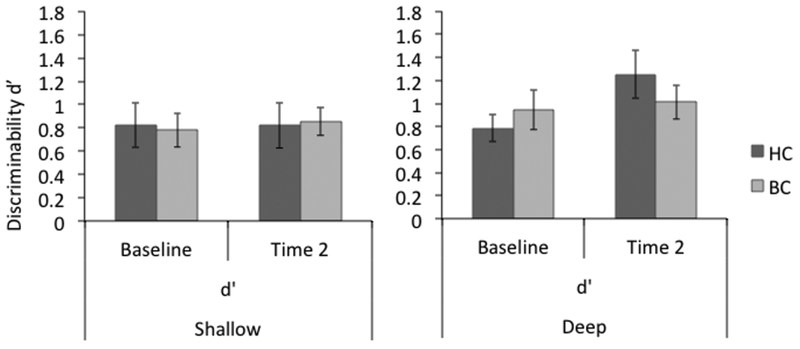Fig. 1.
Recognition accuracy following shallow or deep encoding conditions at baseline and Time 2. A group X level of processing X time ANOVA showed accuracy was significantly better for deep than shallow conditions, and significantly better at Time 2 than at baseline, but no statistically significant differences between groups. A separate analysis within groups, however, showed a near significant greater improvement in the deep condition over time for healthy controls but not breast cancer patients. This pattern is suggestive of an ability to improve due to practice for healthy controls that is undermined following chemotherapy for breast cancer. T-maps rendered on Montreal Neurologic Institute MRI Atlas using MRIcron (Rorden & Brett 2000) at voxel-wise p-values less than 0.001

